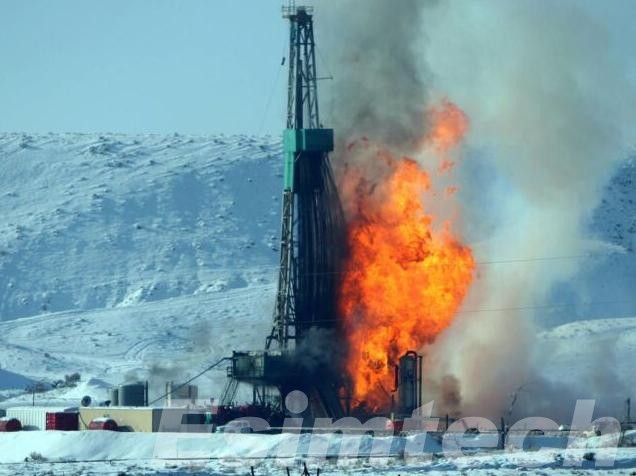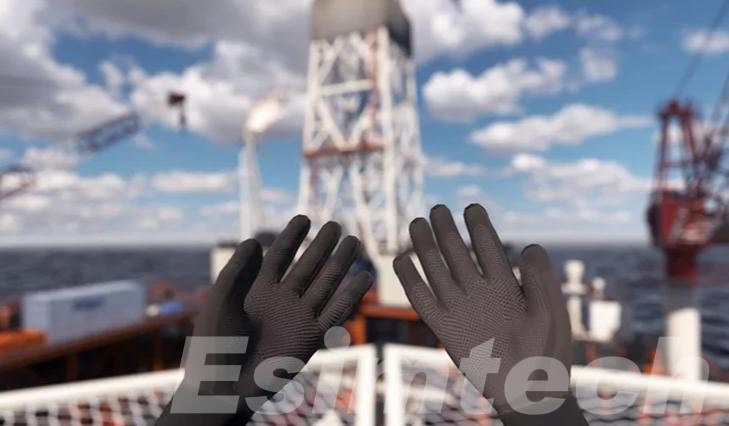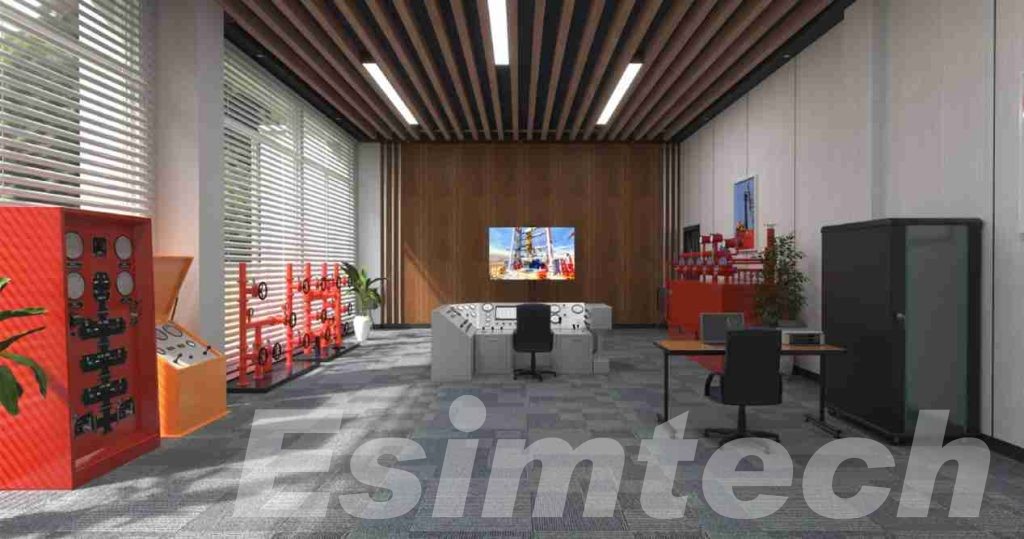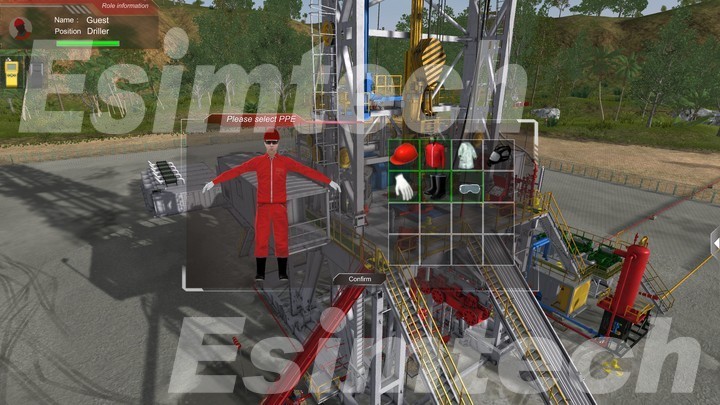Why Oil and Gas Training Is Shifting Toward Simulation Software
The oil and gas industry has always been one of the most complex, high-risk sectors in the world. Traditionally, new engineers, operators, and technicians relied on classroom lectures, manuals, and hands-on field exercises. Whereas these methods have some merit, they often have significant limitations in scalability, repeatability, and safety.
Increasingly over the past few years, oil and gas simulation training software has become a solution that more and more businesses and educational establishments are embracing to bridge these gaps. These tools let learners practice complex operations safely in a controlled digital environment while gaining practical experience that directly translates into real-world performance. Simulation-based training will be an important ingredient in workforce development for operators, training managers, and engineers.

What Is Oil & Gas Simulation Training Software?
At the core, oil and gas simulation training software solutions are digital environments developed to model real-life field operation scenarios virtually. It is a means of acquiring hands-on experience in drilling, production, well control, and emergency response procedures interactively and without risk.
Unlike traditional classroom instructions, simulation software integrates realistic physics modeling, process dynamics, and operational scenarios into an immersive learning experience. This enables trainees to try out different strategies, make mistakes with safety, and gain insight into the consequences of their decisions in a controlled environment.
These simulation platforms can increasingly be found within corporate training programs and university curricula, reflecting the industry push toward a digital transformation and evidence-based development of skills.
Strength of Simulation-Based Oil and Gas Training
Simulation-based training in the oil and gas industry is not just a modern replacement for classroom lectures; it fundamentally changes how employees learn, retain, and apply critical operational skills. The strength of such training lies in connecting theoretical knowledge with practical decision-making in a no-consequence environment, something that most traditional techniques of training often miss.
1. Training for Rare but High-Risk Scenarios
In real oilfield operations, some emergencies, such as well blowouts, sudden pressure spikes, or complex equipment failures, are very rare but may have disastrous outcomes. Such circumstances can hardly be exposed to learners through traditional training methods for safety reasons. Simulation software enables the trainee to practice these low-frequency, high-impact events multiple times until responses become instinctive, building better preparedness without risking people or assets.

2. Building Cognitive Skills Alongside Technical Competence
Oil and gas operations require not only technical know-how but also quick problem-solving and situational judgment under pressure. Simulations put learners into a dynamic, ever-changing environment where they have to analyze data, forecast outcomes, and make instant decisions. This emphasis on both cognitive and technical skills accelerates competency much quicker than passive classroom instruction alone.
3. Immediate Feedback and Iterative Learning
Unlike in conventional training, simulation platforms give immediate feedback on every decision. Trainees can see how their actions are influencing the stability of wells, production rates, or safety parameters in real time. An iterative learning loop reinforces understanding, encourages experimentation, and highlights subtle cause-and-effect relationships not easily captured in textbooks or static exercises.
- Standardization Across Teams and Locations
Oil and gas operations are global, while teams in different regions often experience inconsistent quality of training. Simulation software creates a uniform learning experience whereby every engineer or operator-be it in Houston, Abu Dhabi, or Singapore-receives the same rigorous, hands-on practice. This standardization is especially valued by multi-national operators looking for operational consistency and safety compliance.
5. Long-Term Retention and Transferable Skills
Evidence from workplace learning suggests that skills gained through immersive, hands-on simulation are retained longer and applied more reliably in the field. Beyond the technical procedures, simulations develop critical thinking, risk assessment, and decision-making skills that are transferable over different operational contexts—essential traits in an industry that is continuously faced with new challenges and technologies.
Simulation-based training does not just teach “how to do the job”; rather, it trains professionals to think and react like experts under real-world conditions. This makes simulation-based training a much more strategic investment in workforce development than any of the conventional methods.

What Technology Makes Modern Oil and Gas Simulation Possible
Modern oil and gas simulation training is no longer a digital textbook; it is an interactive learning ecosystem, and the technologies behind it make that possible. What makes today’s simulation so different is not just the graphics or interfaces but how these tools replicate real operational complexity yet remain safe and adaptable for learning purposes.
1. High-Fidelity Process Modeling
Effective simulation relies on the accuracy of the process models. Advanced platforms can now simulate complex wellbore dynamics, fluid behavior, and production processes in real time. This enables trainees to try different operational decisions and view the outcome of these decisions immediately. These models prioritize realism over speed, unlike generic simulations, in order to make sure that the learning transfers directly to field operations.
- Immersive VR and AR Interfaces

VR and AR are not just ‘cool tech’ in training but fundamentally change how the learner perceives spatial and procedural complexity. For instance, the trainees can walk around the rig floor virtually, interact with the equipment, and visualize the subsurface operation in three dimensions. AR overlays can even allow real-time annotations and scenario guidance, bridging the gap between theory and practice.
3. Digital Twin Integration
But the real innovation is integrating digital twins-precise virtual replicas of physical assets-into training scenarios: even the mirroring of live or historical operational data allows trainees to experience realistic fluctuations, failures, or emergency situations as if they were on the actual rig. This then turns simulation as a static exercise into a dynamic, predictive learning environment.
- Adaptive Learning with AI
Artificial intelligence is increasingly being applied to make training customized. AI can track a trainee’s decisions, highlight repeated mistakes, and suggest alternative strategies. Long-term, the system changes up the difficulty and scenario complexity to make sure learners are challenged but not overwhelmed. Such personalization accelerates competency in ways that no traditional, one-size-fits-all training could.
5. Cloud-Based Collaboration and Scalability
Finally, cloud infrastructure allows training together in a unified environment for teams that are geographically dispersed. Remote trainees can interact with the same virtual asset at the same time, enabling team-based exercises, role-specific tasks, and real-time feedback from instructors. For global operators, this is transformative, scaling training while maintaining consistent quality and assessment standards.
In short, modern simulation technologies are not only replicating operations but further amplifying learning by making it interactive, adaptive, and field-relevant. The combination of high-fidelity modeling, immersive interfaces, AI, digital twins, and cloud scalability is what makes today’s oil and gas training software a true step change in workforce development.
Common Types of Oil and Gas Simulation Software
Oil and gas simulation training software is highly specialized, designed to address the diverse challenges that operators face in the field. The choice of simulator types should be selected based on training objectives, complexity of operation, and skill development. Following are the four main types of simulation software in active use in the industry today:
Drilling and Well Planning Simulators

Drilling simulators replicate the full complexity of subsurface operations, including directional drilling, wellbore stability, torque and drag calculations, and mud circulation. Unlike traditional training, these virtual platforms let trainees test decisions that would be too risky or too expensive to practice in real life. An example would be that engineers could simulate the drilling through unstable formations or into unexpected pressure zones, learning how to change drilling parameters without endangering the rig. Beyond technical knowledge, drilling simulators foster problem-solving and decision-making skills; they help trainees anticipate the downstream consequences of their actions-skills that are indispensable in the real world to enhance efficiency and safety while drilling.
Well Control and Emergency Response Simulators

Well control is one of the most high-stakes areas in oil and gas operations. Well control simulation platforms enable operators to practice responding under controlled conditions to critical circumstances such as blowouts, kicks, or sudden pressure surges. Unlike classroom-based lessons, simulators integrate realistic rig behavior, instrumentation feedback, and time-sensitive decision-making. Trainees develop not only technical competence but also the psychological readiness to keep calm in very critical circumstances. Advanced platforms track response patterns and provide analytics to identify recurring mistakes or knowledge gaps, allowing for targeted coaching. The result is a far better-prepared workforce to prevent incidents that could cause catastrophic safety, environmental, or financial consequences.
Production and Process Optimization Simulators

Production simulators cater to surface facilities, pipelines, and processing systems, enabling trainees to manage production, find faults in equipment, or optimize an operational strategy. Many of these platforms are able to mimic process dynamics in real time, enabling users to test changes related to flow rates, pressure management, or separation processes. The most important aspect is the development of critical thinking: operators learn to predict how one decision would impact the whole system-from wellheads to processing facilities. This kind of training is particularly useful for mid-career professionals tasked with optimizing production efficiency, reducing downtime, and maintaining system reliability without risking actual equipment or revenue.
Health, Safety, and Environmental (HSE) Simulators

HSE simulators develop safe behavior and emergency preparedness. Such scenarios might range from fire outbreaks and chemical spills to equipment failure or offshore evacuation exercises. Modern platforms quantify the performance of trainees, track reaction times, and highlight errors in decision-making. Above mere compliance, this strengthens safety culture through multiple controlled exposures to high-risk situations. HSE software simulates realistic emergencies to make employees internalize the concepts of safety, thus reducing the possibility of accidents and improving general operational resilience.
Final
The shift toward simulation-based oil and gas training software reflects the broader trends within the industry in safety, digitization, and workforce development. Applying these tools guarantees that companies and educational institutions will benefit measurably through enhanced safety, accelerated learning, cost efficiency, and data-driven performance insights.
Simulation-based training is no longer optional; for oil and gas professionals, it is a core part of developing a competent, adaptable, and confident workforce for the challenges of modern operations.
By investing in the right simulation software, operators can ensure that employees are prepared to perform in a complex, high-risk environment and, at the same time, protect people, assets, and the environment.
